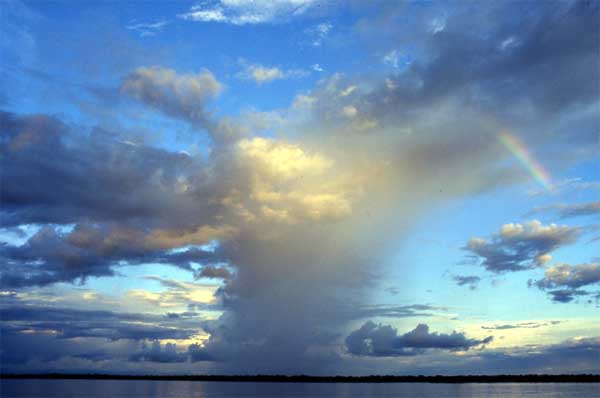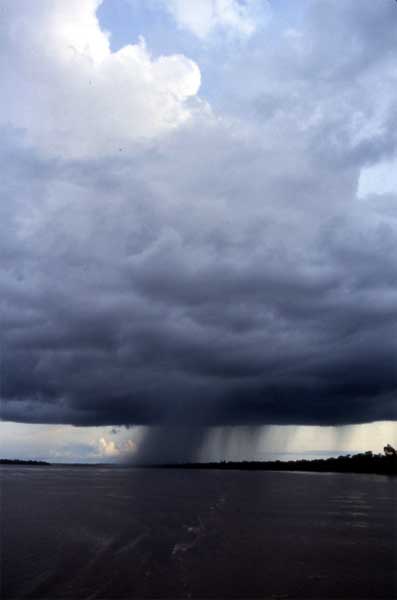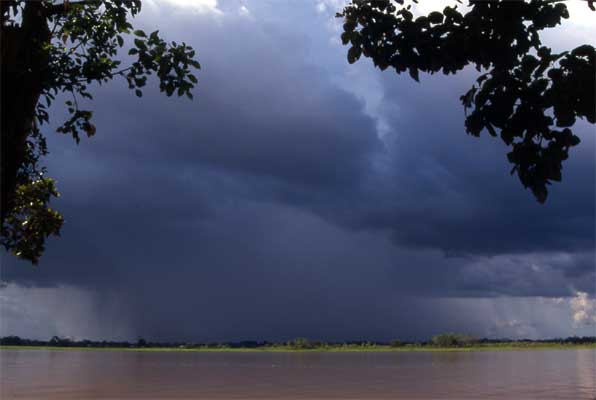MAKING OF A STORM
When people visit the rainforest, they are often surprised to learn that it does not rain all the time. In fact, most of the rain falls in very heavy thunderstorms, with perhaps an inch or two falling in a couple of hours or less. How does this occur? Due to the heat and humidity, storm clouds build up rapidly, and reach high into the atmosphere—to altitudes 20,000 feet or more. Such clouds (called "cumulonimbus") hold a vast quantity of water and when conditions are right, the cloud releases its store of water in a sudden torrential downpour. The images featured here demonstrate the progression of a storm, the intensity of this rainfall, and how it can fall in a small area while the surrounding area is completely dry. |
Click below to see the photos and information on making of a storm:
tall cloud (cumulonimbus)
rain falling
storm cloud
TALL CLOUD (CUMULONIMBUS)
return to gallery
By mid- to late-afternoon, enough energy has heated up the air to drive the moisture many thousands of feet into the atmosphere. A typical "anvil-shaped" cloud forms, presaging a dramatic storm. Once the cloud has grown to its maximum size, it drops its load of water in vast quantities, as shown below. This type of cloud is called a thunderhead, and meteorologists call it cumulonimbus. Banks of low clouds (stratus), although common in temperate parts of the world, are rare in the Amazon. |
RAIN FALLING
return to gallery
In a sudden downpour like this, rain can fall at an inch per hour or more—enough to cause floods across the forest floor, often for a number of miles from the river bank. These "flooded forests" are a unique habitat within the Amazon ecosystem, which add greatly to the region's biodiversity. |
STORM CLOUD
return to gallery
In the Amazon rain will be falling in one place, while the sun shines in another. Water is efficiently recycled within the ecosystem. Only a quarter of the rain that falls drains away down rivers. Of the other three-quarters, half is absorbed by plants and then released again as water vapor to form more clouds and fall again, whereas another quarter evaporates right away to form new clouds. This means three-quarters of all the water stays in the system, going around and around in the "hydrological cycle." |
Learn more about how storms are made
previous photos
|
next photos
|
|---|





